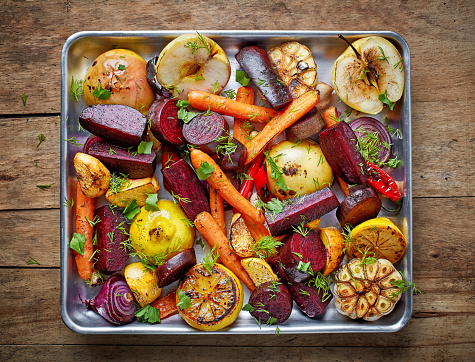5 Foods You Should Stop Putting in Your Fridge
Article posted in: Lifestyle
Americans throw out as much as half of the food they buy—in 2012, that was estimated to be 35 million tons of food, accounting for more than 20 percent of the nation’s garbage. And it cost us money, too: One estimate pegged the 2012 number at $165 billion in food that went in the trash.
Your share: $518. In the trash! We can do better—for the environment, for our wallets and for the taste and texture of our food. Start with these five fruits and veggies—never put them in the fridge again, and enjoy better food for all of 2016.
1. Tomatoes
Why keep them out of the fridge? They get mealy. A great tomato is juicy, soft and ripe, but an unripe tomato put in the fridge doesn’t get that way. Instead, the flesh stays harder and gets mealy, and the fruit doesn’t get as sweet. You probably think you’ve gotten a bad tomato, and may be tempted to toss it.
What to do instead: Though many grocery store tomatoes are red and look ripe, they’re not quite ready yet. If a tomato feels really firm, try keeping it on the counter to let it ripen. And if you want it to ripen even faster, put it in a brown paper bag and close the top. The recirculating air and warmth can help push ripening along.
2. Bananas
Why keep them out of the fridge? They get freezer damage at just under 60 degrees. No joke! Bananas are tropical fruits. The fridge not only turns their skin prematurely brown and gray, but also makes the flavor and flesh go from chalky to overripe without stopping at the delicious, sweet, soft-but-not-too-soft texture you really want.
What to do instead: Keep them at room temperature. If you want some bananas today and for the next week or so, try buying two smaller bunches. Start with one small bunch that may have a few brown spots on their yellow flesh—those are ready to eat today and tomorrow. Then grab a larger bunch that’s part-green, part-yellow. They’ll ripen on the counter over the next few days.
3. Potatoes
Why keep them out of the fridge? The cold actually turns the starch into sugar, giving your potatoes an odd, sweet taste.
What to do instead: To keep the potatoes from growing eyes and sprouting, keep them away from warmth and light. A cool (but not cold), dry storage location is ideal—like the basement, the floor of a pantry closet or in a cabinet. Keep the potatoes unwashed until you’re ready to start cooking to keep fungus and unwanted growth at bay.
4. Basil
Why keep it out of the fridge? It actually wilts faster! Basil in the fridge will shrivel up from the cold, much as the plant does in late fall, and the leaves can start to turn brown or gray.
What to do instead: Treat basil like cut flowers. Cut the stems of the basil at an angle and place it in a glass of water, changing out for clean water each day. Some people also like to place a loose plastic bag (with holes cut for air) over the leaves, creating a kind of greenhouse for the herb. Just don’t put it in direct sunlight, and your basil should last longer and taste better.
5. Citrus Fruits
Why keep it out of the fridge? They won’t go bad on the counter, and they absorb the smells of other things in the fridge while kept in the cold. While absorbing odors in the fridge can be a good thing—like with baking soda—it’s not as desirable when it makes your oranges taste like everything else you’ve been storing.
What to do instead: Put them in a bowl! These colorful balls of sweetness will stay ripe and good to eat for up to a month, and studies show that having food out in the open where you can see it will make you more likely to eat it—make the choices that are out in the open great choices, like a fiber-rich, juicy orange or grapefruit.













